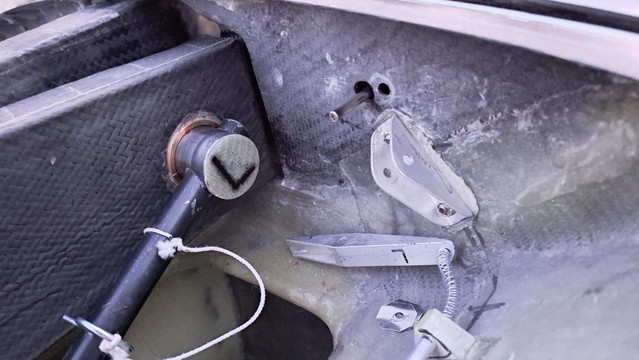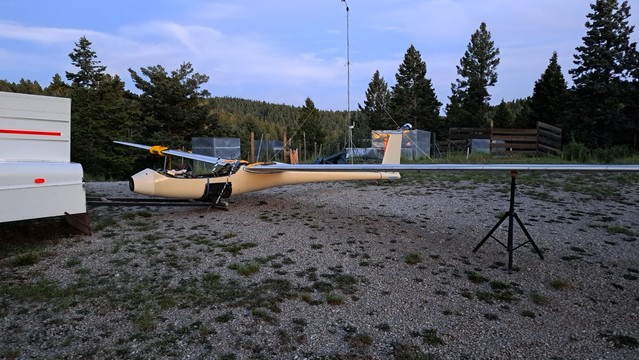Recent searches
Search options
I have installed the stainless steel push rods that press against the wing water ballast tank valves.
I made them intentionally too long. Now I can cut them to the right length...tomorrow.
In order to install and size these push rods...I had to assemble the glider in the driveway, lol!
#avgeek #aviation #ElectricAircraft #ExperimentalAviation #homebuilt
#Glider
@KrajciTom I should search this myself, but what do gliders use the ballast for? It seems like being lighter would almost always be better?
@inktomi @KrajciTom almost certainly for CG reasons.
Let's say a given glider has a best glide ratio of 40:1.
When the glider is light, its best glide speed is slower.
Add ballast and the glider, surprisingly, can still achieve a best glide ratio of 40:1, but at a higher speed.
But there ain't no such thing as a free lunch.
With ballast, the glider's minimum sink rate is higher. It can't climb as fast in thermals.
But in straight runs it catches the lighter glider....IF it's a fairly strong lift day.
The wing ballast tanks shift the C/G forward, so there is a third, small, tank in the tail.
My tail tank should be able to hold 10 - 12 pounds. (If I need more mass in the tail, beet juice has a specific gravity of 1.35!)
How much will my wing tanks hold? A crude estimate says 25 gallons per wing. That can add a bit over 400 pounds.
After I get the valve controls working, I'll measure how much water the tanks actually hold.
A complete C/G analysis will happen after painting and installation of all equipment.



